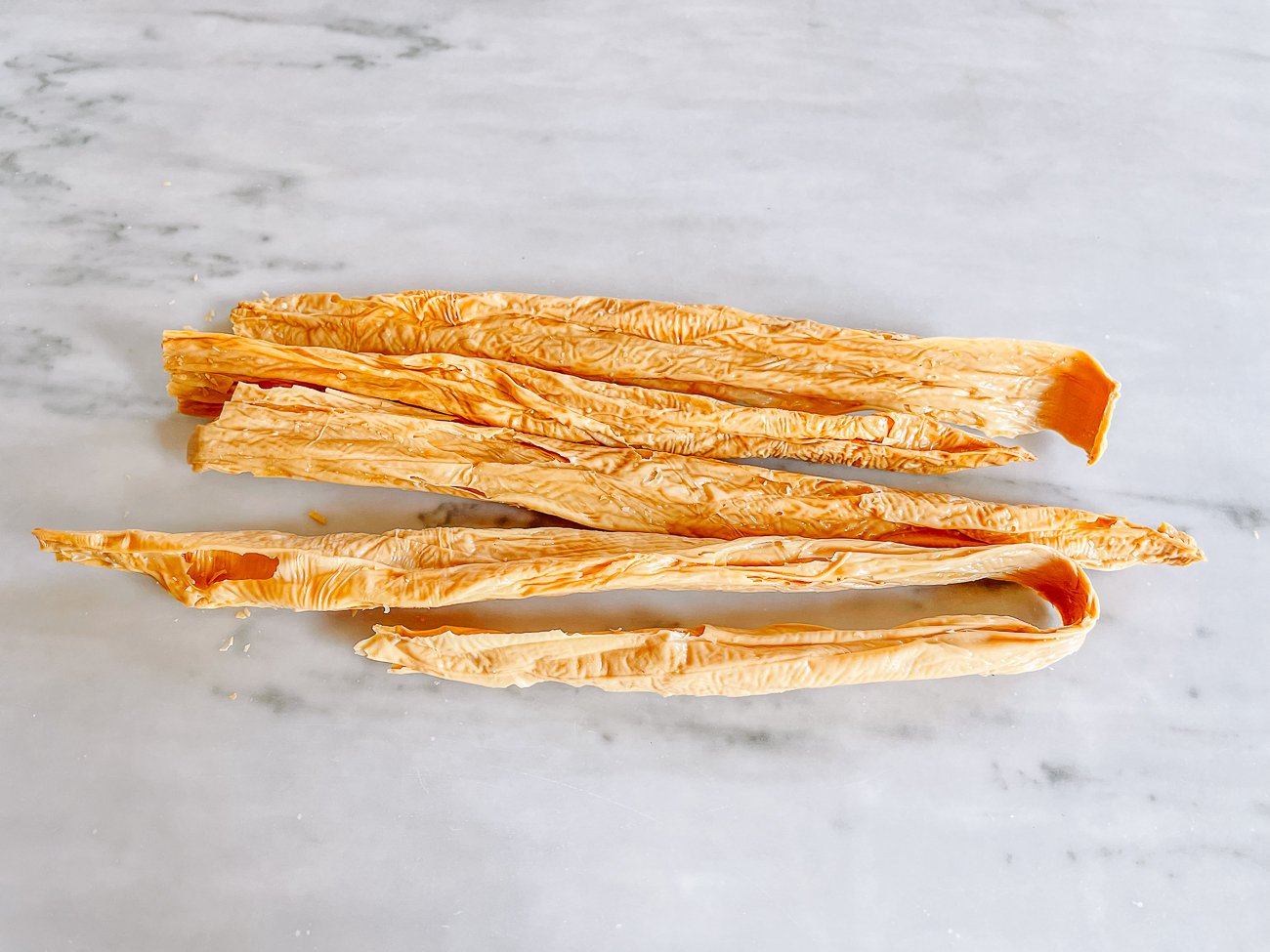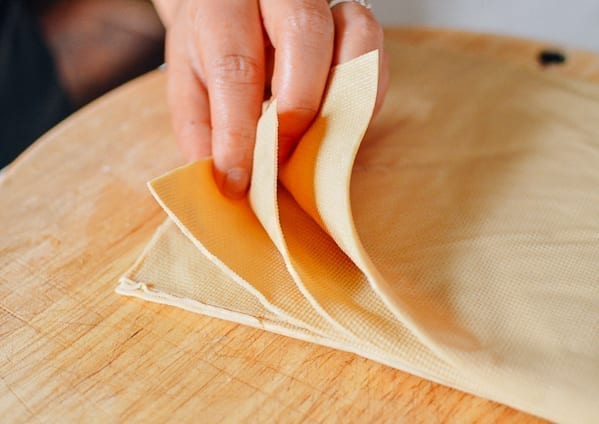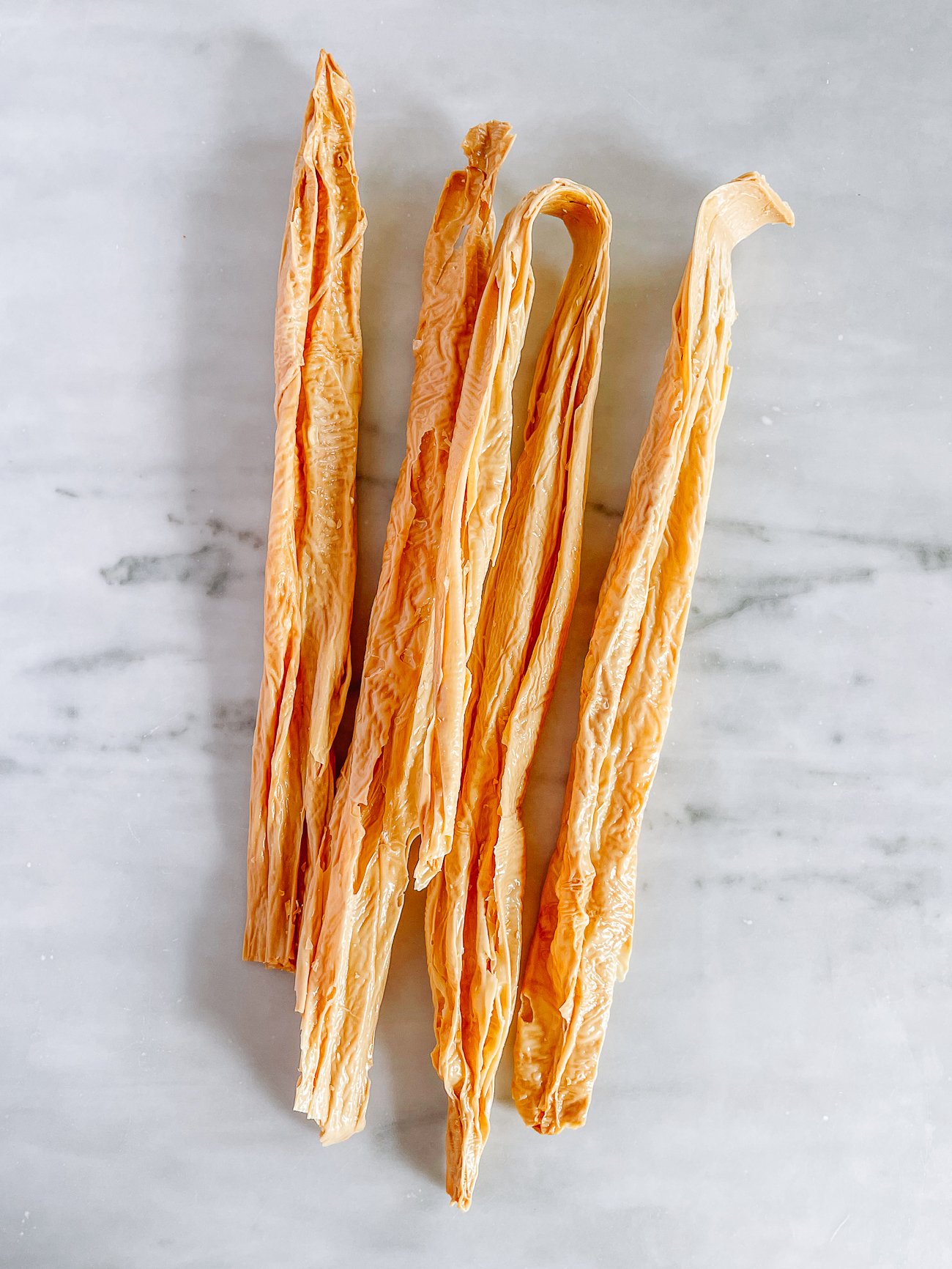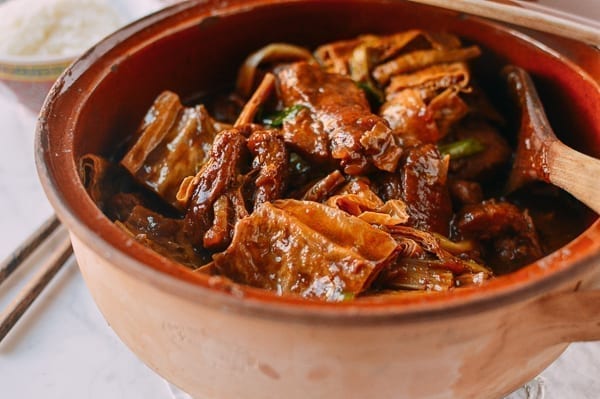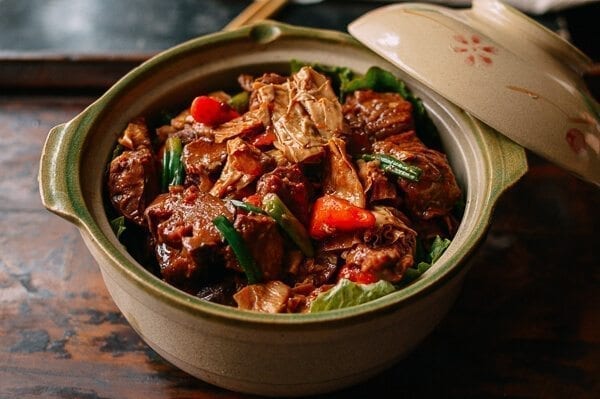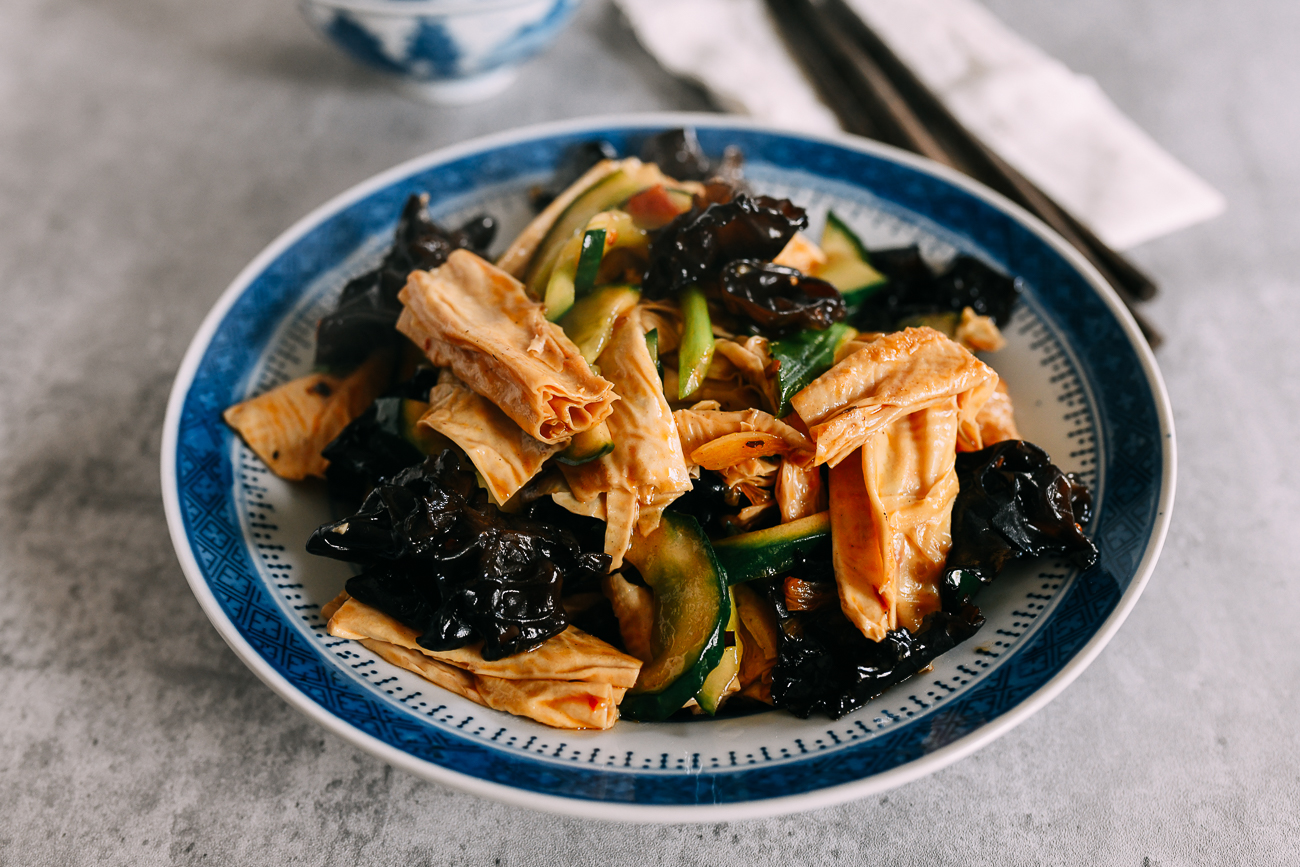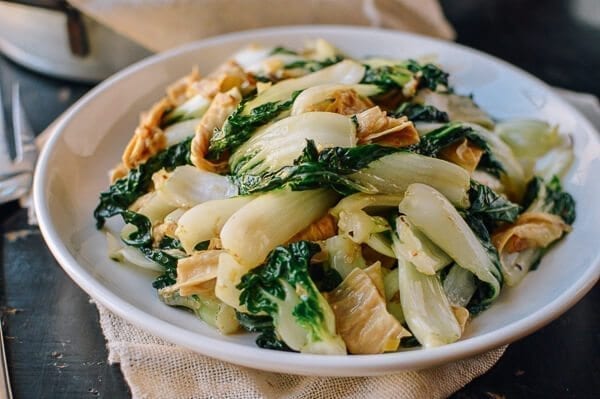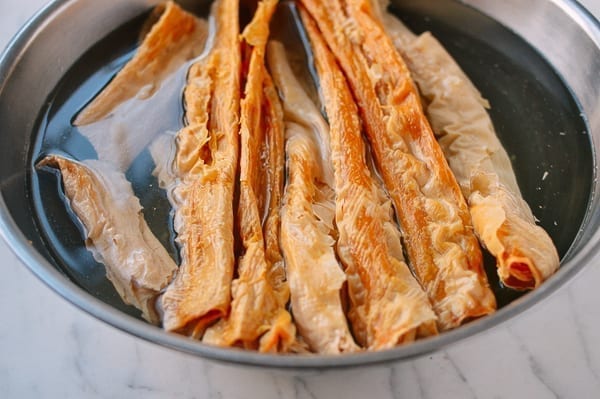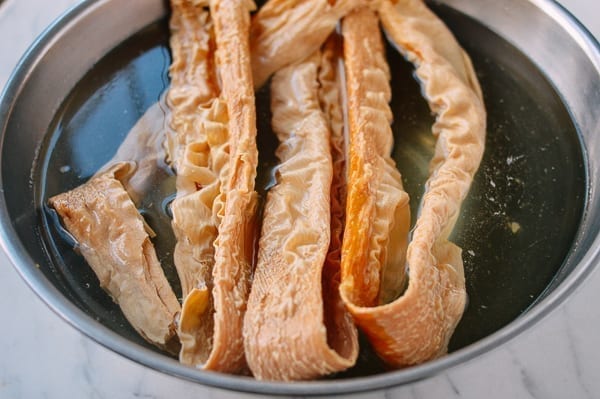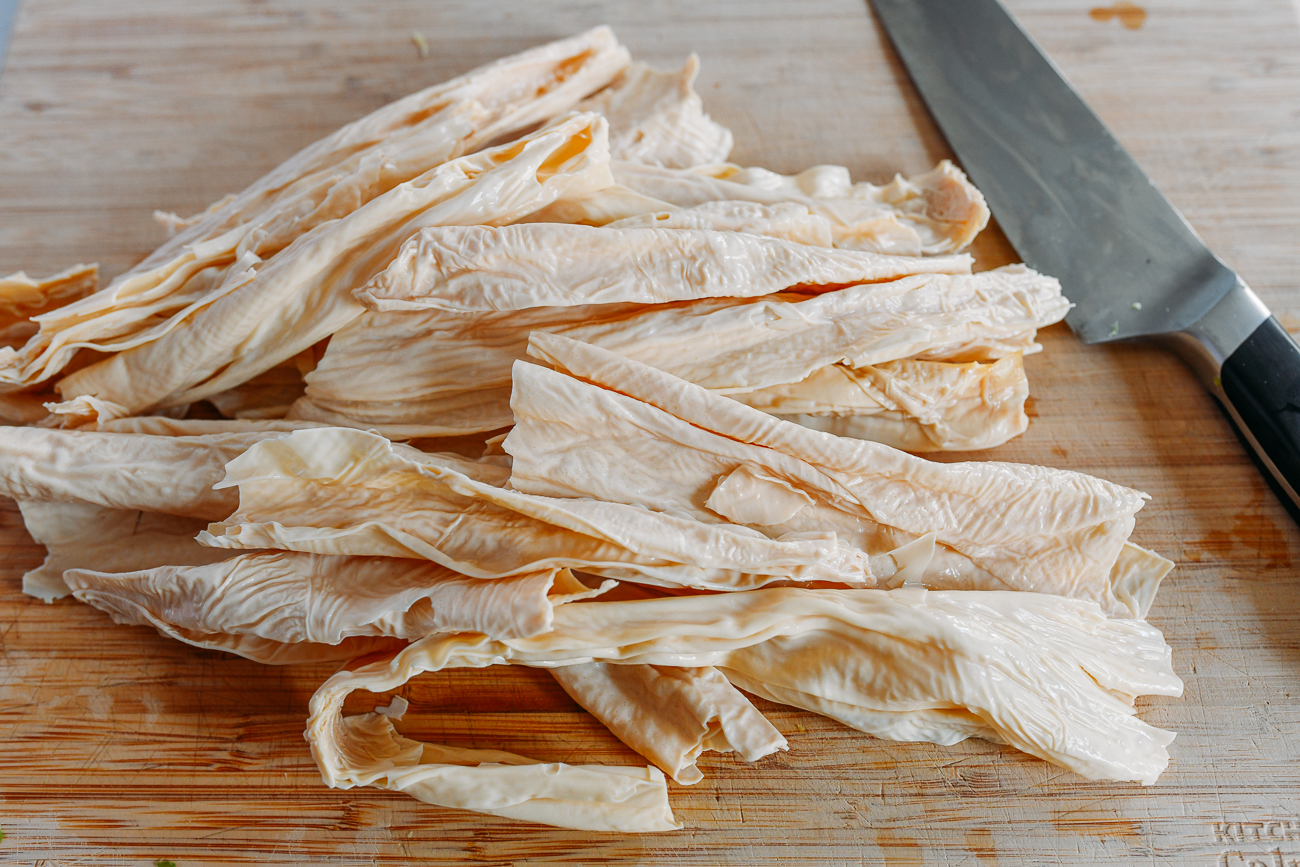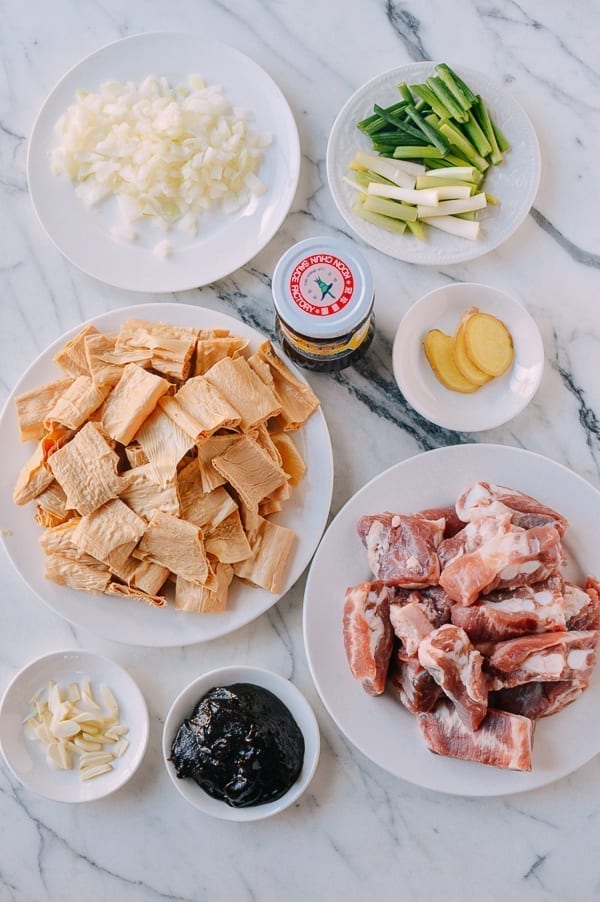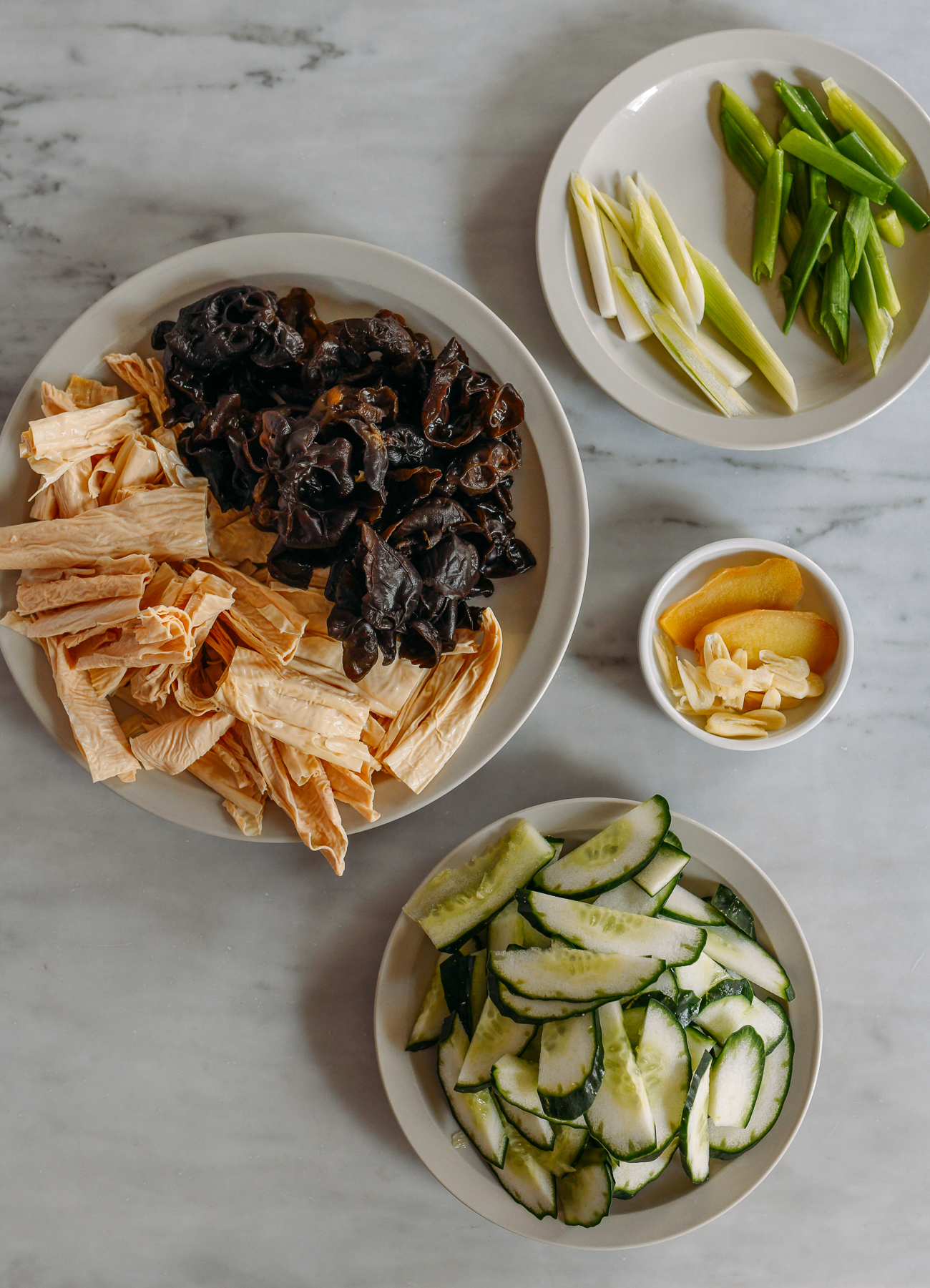It is one of our favorite types of bean curd, however, offering a delicious texture that clings to tasty sauces. In this article, we’ll tell you everything you need to know about this ingredient.
What Are Dried Bean Curd Sticks?
Dried bean curd sticks, also called bean threads (fǔzhú in Mandarin and foo jook in Cantonese – 腐竹) are made by cooking soy milk until a film forms on top. The film is lifted off the soy milk with a stick, rolled, and folded into long, rough tubes. Then it’s dried and packaged for sale. English translations of this ingredient can be confusing. Dried bean curd sticks are sometimes also referred to as “tofu skin.” This is particularly confusing because there’s another type of tofu skin comprised of compressed sheets of tofu that are much thicker than the film used to make dried bean curd sticks or bean curd sheets. A variation of these dried bean curd sticks are known in Japanese cooking as yuba.
How Are They Used?
Dried bean curd sticks may be intimidating for the first-time Chinese chef, but we love using them in our recipes and regular home cooking. They have a mild flavor like most types of tofu, as well as a pleasingly chewy texture. Like Italian pastas, the way they are folded leaves many nooks and crannies to catch sauce in stewed or braised dishes like Pork Rib Stew with Chee Hou Sauce and our Hong Kong Style Braised Lamb Casserole. They can also be stir-fried with meat or vegetables like bok choy, like in our Stir-fried Bok Choy with Tofu Skin (there’s that pesky confusing English translation again. We’re guilty of it too). If we were vegetarians, we would be eating a lot more dried bean threads on a regular basis, as they offer such a great textural change to your normal everyday tofu. But even to a non-vegetarian, they have a great meaty texture. They come dried and must be soaked for a couple hours or overnight before slicing and cooking.
Buying & Storing
Dried Bean Curd Sticks are shelf stable and do not require refrigeration. They can be found in Chinese grocery stores, usually in the same aisle as dried mushrooms, dried wood ears, and other dry ingredients. They are also relatively delicate and can be easily crushed in the package, so make sure to buy bean curd sticks that are still intact and not cracked or broken up. When you bring them home, store in their sealed package in a cool, dry place such as the pantry. Once opened, reseal the package or store in a sealed container.
Our Favorite Recipes That Use This Ingredient
Chinese Braised Lamb CasseroleBuddha’s Delight (Vegetarian Lo Han Jai)Pork Rib Stew with Chee Hou SauceStir-fried Bok Choy with Tofu SkinStir-fried Cucumber with Bean Threads and Wood EarsMa La Xiang Guo (Spicy Numbing Stir-fry Pot)
